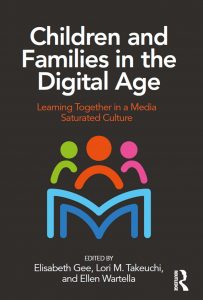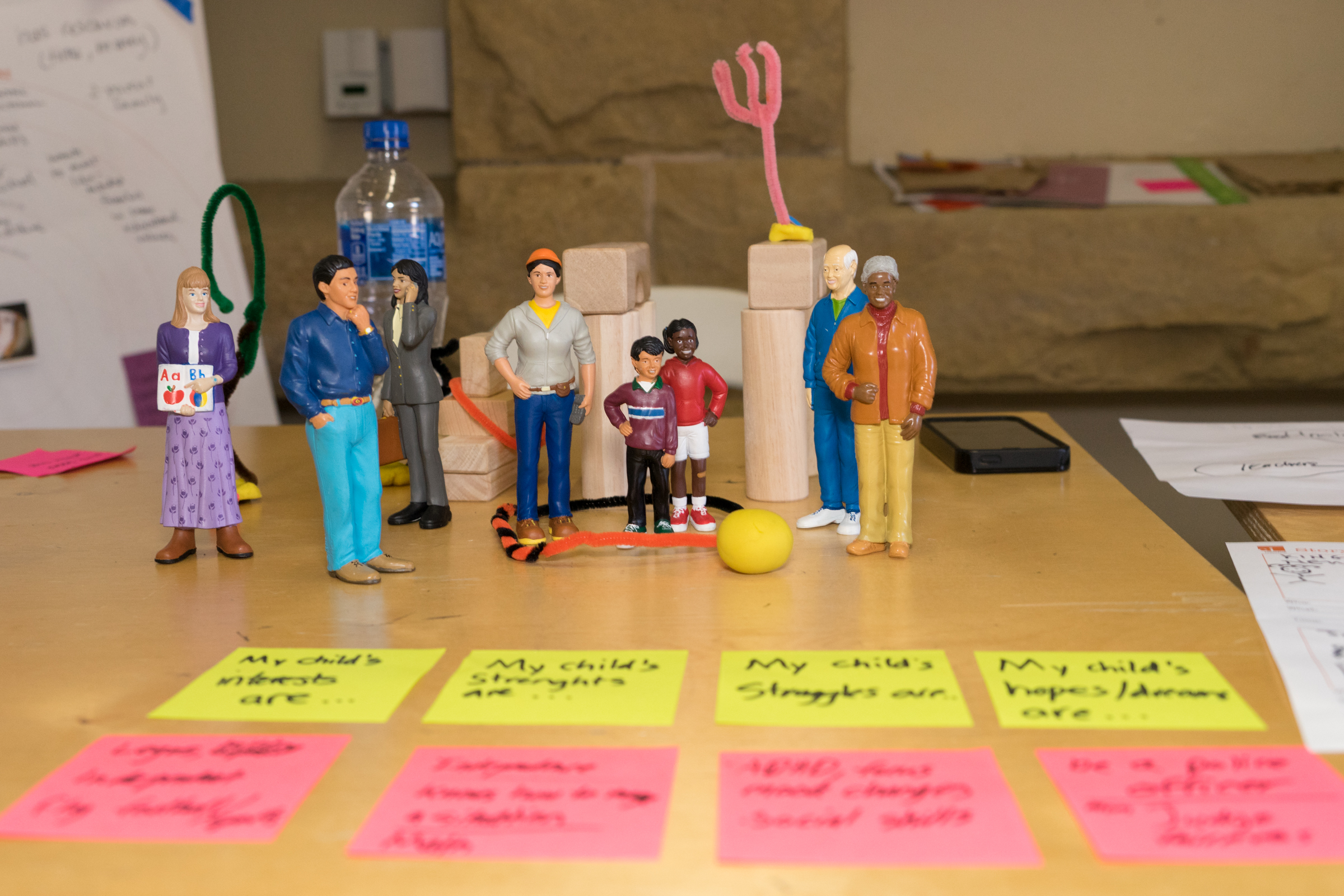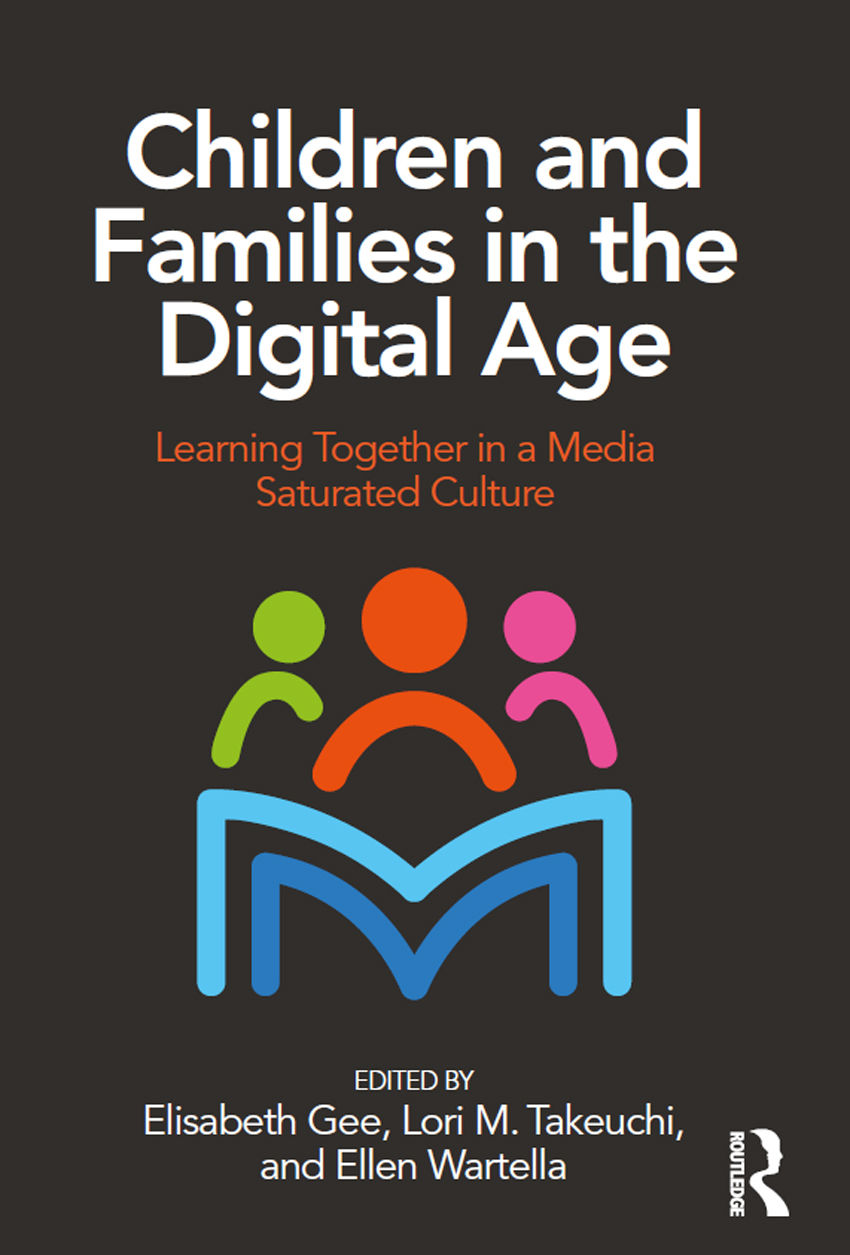 Children and Families in the Digital Age: Learning Together in a Media Saturated Culture brings together insights from several years of work by a multidisciplinary team of scholars who comprise the Families and Media Project (FAM). As members of FAM as well as co-editors of the volume, we’re delighted to have been a part of this project and to have helped bring this book to fruition. We feel that the book, and the work of the FAM researchers as a whole, addresses the need for more nuanced, detailed investigations of how families, especially those with young children, are incorporating digital media into their lives. A particular focus in our research is on the ways that families’ engagement with digital media offers intentional and unintentional opportunities for learning.
Children and Families in the Digital Age: Learning Together in a Media Saturated Culture brings together insights from several years of work by a multidisciplinary team of scholars who comprise the Families and Media Project (FAM). As members of FAM as well as co-editors of the volume, we’re delighted to have been a part of this project and to have helped bring this book to fruition. We feel that the book, and the work of the FAM researchers as a whole, addresses the need for more nuanced, detailed investigations of how families, especially those with young children, are incorporating digital media into their lives. A particular focus in our research is on the ways that families’ engagement with digital media offers intentional and unintentional opportunities for learning.

The studies that informed the book utilized a wide variety of research methods: survey research with large numbers of respondents to identify patterns in digital media use and learning across families; in-depth interviews with parents, other adult family members, and children; and repeated observations of family life. Particularly important to our collective work was understanding the role of digital media use in the context of families’ lives, not as isolated or separate activities but as caught up in family routines, relationships, values, and aspirations. Also important was our belief that technologies of any sort are not deterministic of particular behaviors or outcomes, but rather that families, including children as well as parents and other adults, actively engage with digital media to serve their own purposes and goals.
We could not have done this work without the willingness of families to participate by answering our questions and allowing us to visit their homes. We watched families playing video games together, rode with kids in the back of the family car as they used mobile devices “on the go,” chatted with parents and teens about telenovelas, and witnessed kids and grandparents collectively troubleshoot issues with video conferencing software. Family members shared their beliefs about the importance of digital media for connecting with each other and with family at a distance, for access to information on topics ranging from parenting to Legos, and for children’s success in school. They also discussed concerns about screen time, conflicts over media use, frustrations with confusing or outdated technologies, and other challenges. Overall, the metaphor of a mosaic perhaps best characterizes the nature of family life and learning that is captured in these pages: digital media have distinctive meanings and roles for each family, while across families we can discern common patterns and themes. Throughout the chapters in this book, the authors have attempted to balance a description of these common themes with rich and detailed examples of individual families’ experiences.
We hope that the insights and stories in this book will be informative for readers with varied backgrounds and interests, including educators, researchers, and designers of digital media. We suspect that readers may find some of the examples and themes resonate with their own family and parenting experiences, while others may be surprising. Much of the material in each chapter provides a counterbalance to the frequently negative portrayal of digital media in family life conveyed by the popular press and more scholarly work. There are many examples of how digital media are bringing families together to pursue shared interests, to help each other with everyday tasks, or to reinforce shared values and family identities. In addition, the chapters show how significant learning takes place in the seemingly routine or even mundane activities that digital media support in the home, be it setting up a new Skype account, creating videos with a smartphone, or dealing with the limitations of translation software.
What impressed us the most, perhaps, was the ingenuity, persistence, and resourcefulness that families demonstrate in how they recruit digital media in the service of their goals and aspirations. Many of the parents in our research were immigrants, with limited English language skills, and few financial resources. Their ability to provide children with up-to-date technology tools and to take advantage of internet resources for supporting children’s formal academic learning was, of course, much more restricted than that of parents with more financial and educational assets. However, as the chapter authors describe, parents of all backgrounds expressed a desire for assistance in learning how to better choose, evaluate, and use digital media to enhance their children’s learning and improve the quality of family life as a whole. We hope that readers will find inspiration in the pages of this book for their own efforts to support a family-centered approach to the design and use of digital media that build on families’ strengths and are responsive to the diverse contexts of families’ lives.

Elisabeth R. Gee is the Associate Director for the Center for Games & Impact. Gee is a Professor and holds the Delbert & Jewell Lewis Chair in Reading & Literacy at Mary Lou Fulton Teachers College. She has published widely on the topics of literacy, gender, gaming, and learning; her recent books include Women and Gaming: The Sims and 21st Century Learning (2010), Language and Learning in a Digital Age (2011), both co-authored with James Gee, and Learning in Video Gaming Affinity Spaces (2012) (co-edited with Sean Duncan). Prof. Hayes is currently the co-director of Play2Connect, a research and outreach project that aims to promote intergenerational learning, communication, and well being through video games. She is a co-editor of Children and Families in the Digital Age: Learning Together in a Media Saturated Culture.



